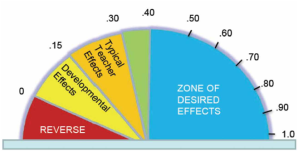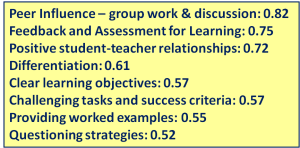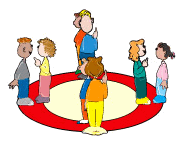John Hattie’s research into the most effective strategies for improving student achievement has had a major impact on our thinking about teaching and learning.
His most recent book “Visible learning for teachers: maximising impact on teaching” takes all this research and applies it to the classroom; looking at the practical strategies which, the evidence shows, have the most significant impact on our students’ progress.
The great thing about Hattie’s approach is that he has found a way to compare the impact of different interventions on the same scale. He calls this the ‘effect size’. Virtually every strategy we can think will have some effect, so the really important ones are those that beat the average, in other words, the ones that work best. An effect size of one, for example, translates into a major impact on student learning – a two-grade leap in GCSE performance or advancing learners’ achievement by up to one year.
Hattie estimates that the average effect size is 0.4. So we need concentrate on the interventions that have a larger impact than this – the ones that fall into the ‘blue zone’:

Thankfully, Hattie’s estimates suggest that these blue zone factors are already well reflected in our Paddington 10 + 3:

There’s a short summary of Hattie’s work attached below. His book is packed with practical applications of strategies that promote ‘visible learning’ – the exceptional progress which we need all our students to be making in individual lessons and across years. I’ll be blogging bits and pieces from it over the coming months.
John Hattie – what works best summary
 This strategy is useful as an engaging connect that encourages high level thinking. Plus, it’s fun.
This strategy is useful as an engaging connect that encourages high level thinking. Plus, it’s fun.



